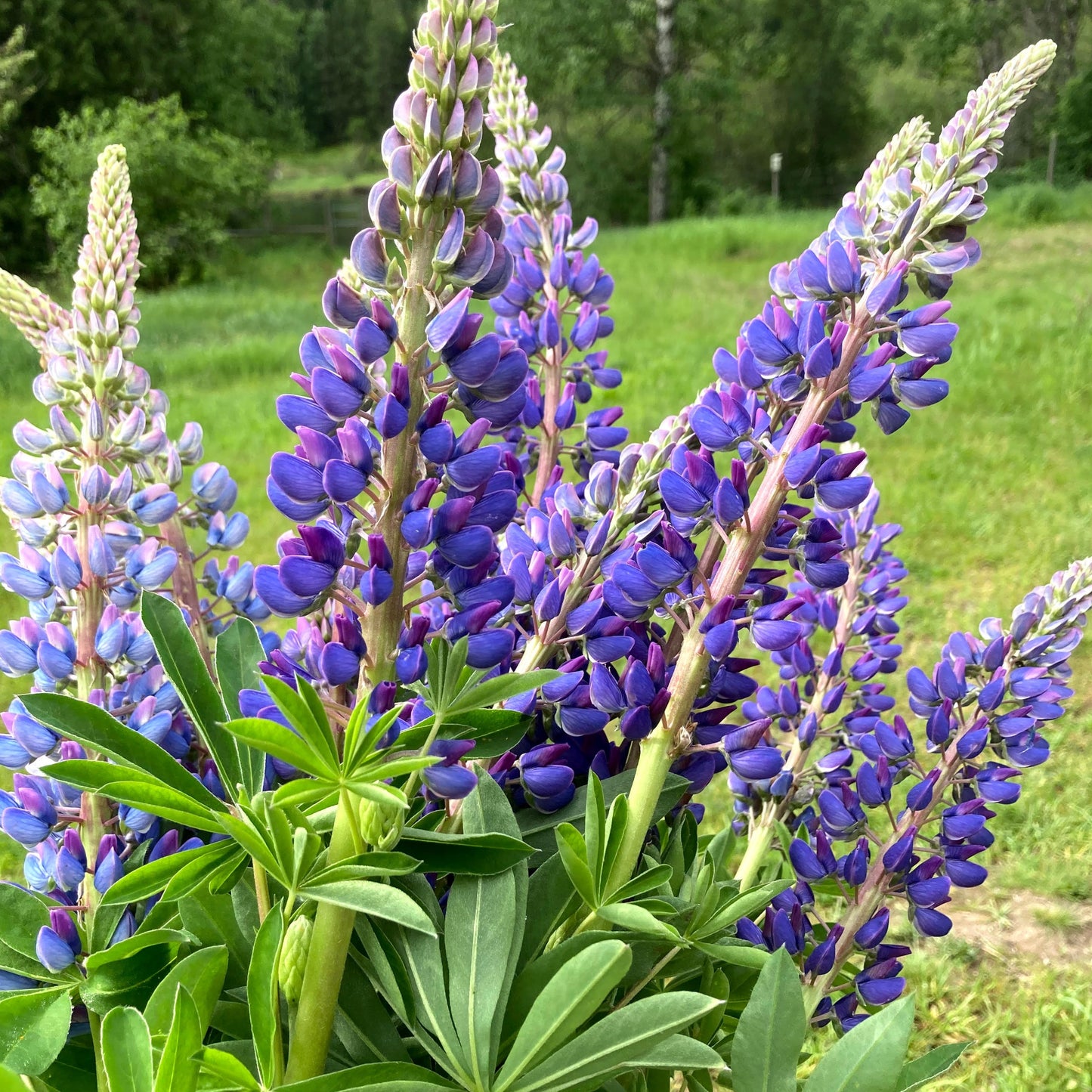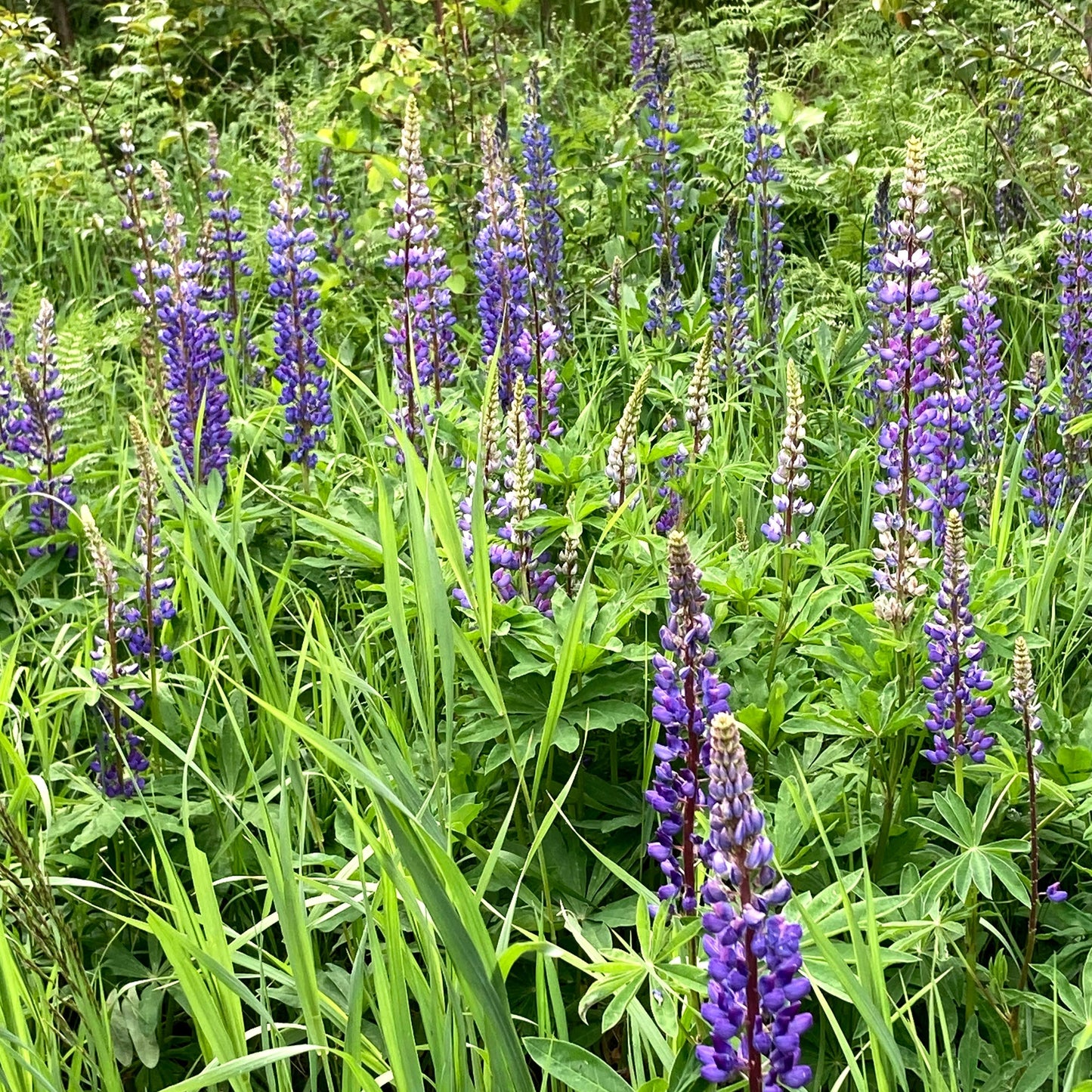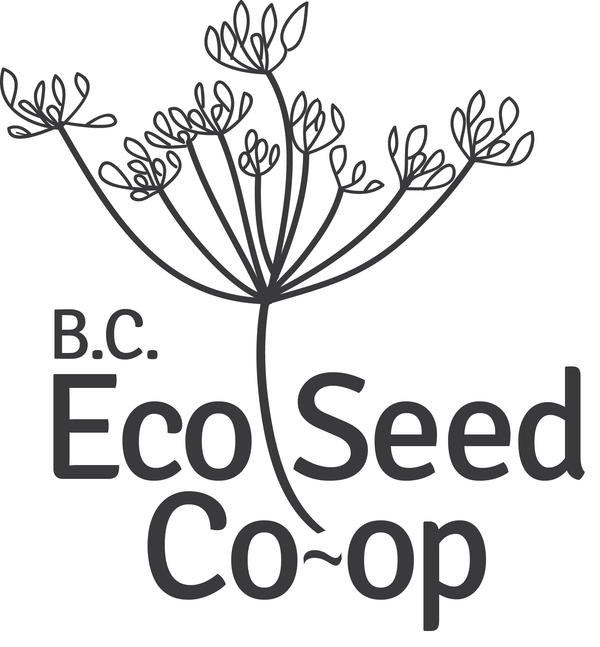Hummingbird Farm
LupinNative Blue
Lupin
Native BluePerennial, first year blooms
Certified Organic
Couldn't load pickup availability
Lupinus polyphyllus
Easy to grow from seed, by early season direct seeding it will flower the first year. Short lived perennial native to BC, but will happily self seed. Excellent early season pollinator crop. Beautiful cut flower for local sales when little else is in flower. Hardy to zone 3 and standing about 36" tall it is a great perennial for a cottage garden.
Lupin is difficult to germinate. Rub the seed with rough sandpaper to weaken the seed coat then soak for 24 hours or more. Germinates at room temperature.
Certified Organic
A note about germination rates for Native Seeds
Our native seeds are not germination tested, as both germination rates and time to germination can vary significantly compared to commercial seed varieties. Many native seeds require specific pre-treatments—such as cold stratification, exposure to light, or temperature fluctuations—to successfully germinate.
Additionally, many native perennial plants may take several years to mature and begin flowering.
For best results, please refer to our Growing Tips for strategies to support successful germination.
Tips for planting out native seeds:
- Sow your seed in the Fall, as Nature would. If you don’t want to be patient, then putting your seeds in some damp soil in the fridge for 4-6 weeks can also help germination as they benefit from a cold period.
- While there are technical tips that can be followed for each native species, we find generally good success by sowing seeds in a pot of sterilized potting soil in early Fall, and sinking the pot or tray into the ground in your garden where it can stay for 1-3 years.
- Cover your seeding tray/pot with a fine wire mesh to keep out mice, squirrels, rabbits, cats and other critters who may want to nibble seedlings or dig up the nice potting soil.
- When seedlings emerge in the Spring, prick them gently out with a fork once they have two sets of leaves (this indicates good root development so they survive transplanting better), then transplant them to their final location and water in well.
- Leave the pot in place, and over the next couple of years it’s easy to continue pricking out new seedlings to transplant as they emerge.
Share




